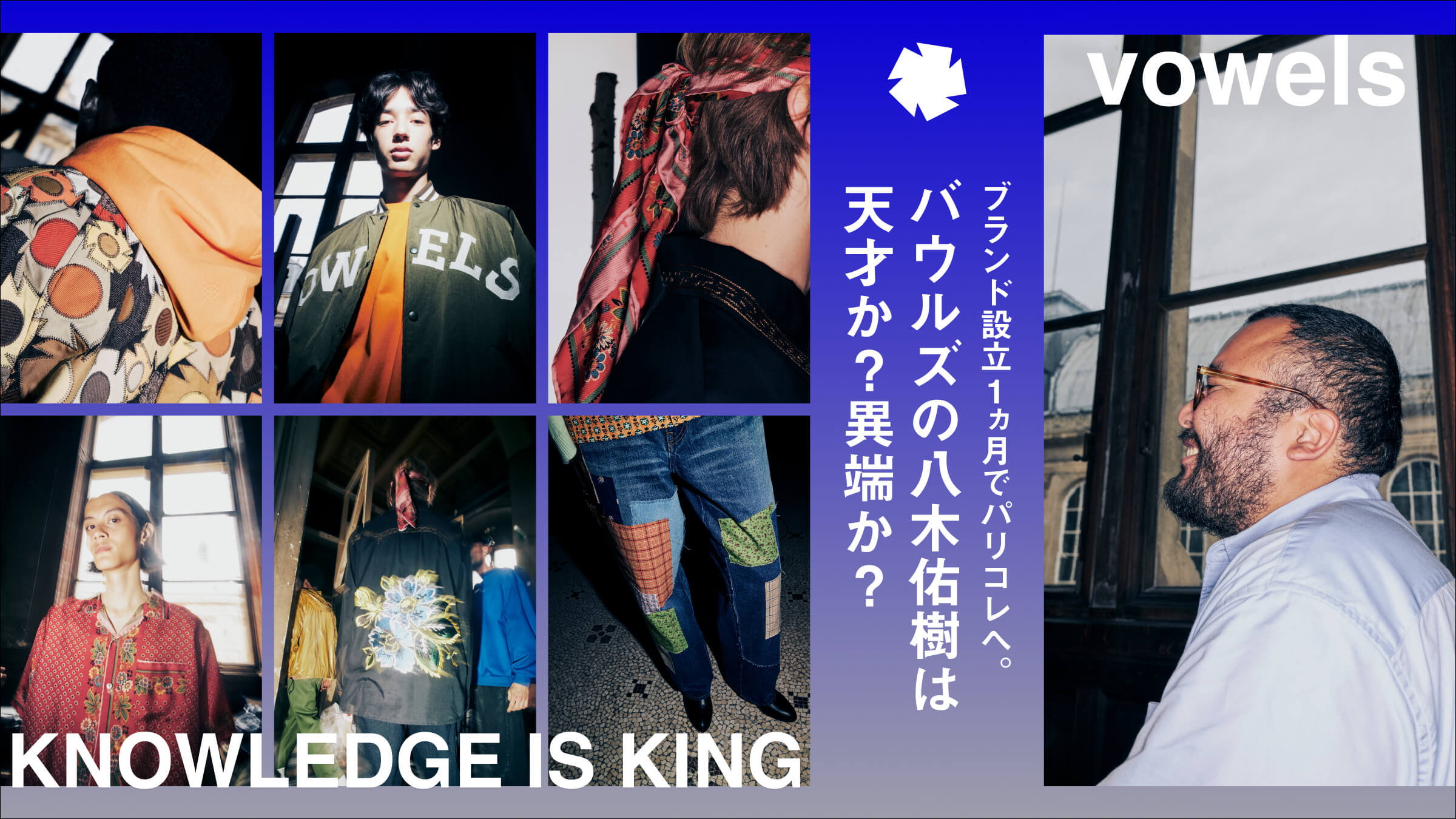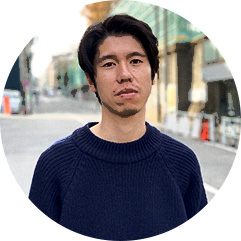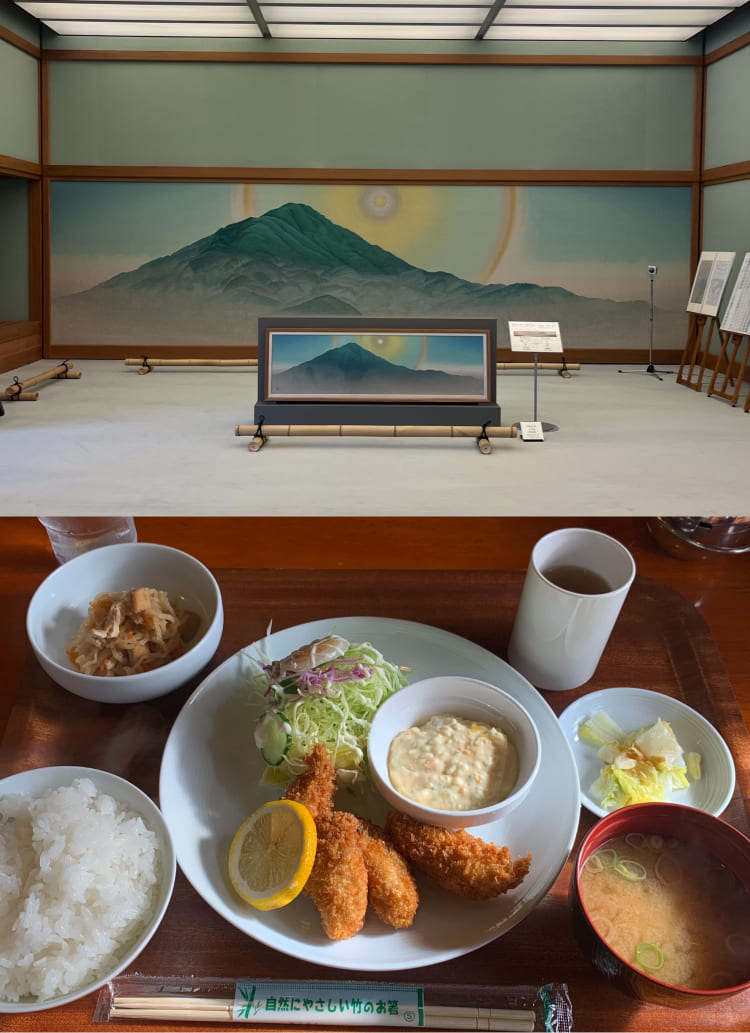
PROFILE
Born in Tottori, Japan in 1993. Due to his parents' work, he lived in the U.S. from the age of 5 to 15. After graduating from high school in Japan, he spent time in Paris and studied fashion making at the Parsons School of Design in the U.S. and the Royal Academy of Fine Arts in Antwerp, Belgium. After working for a number of well-known street brands, he launched "vowels" in May of this year.
Become indispensable, like a vowel.
How do you feel now that the presentation is over? Have you calmed down?
Yagi:I am unsettled. After all, results are everything. Sales and numbers are everything after the showroom is over.
The theme of this collection is "Spring, Summer, Fall, and Winter.
Yagi:I know it sounds extreme, but in this day and age, you can feel spring, summer, fall, and winter in any month of the year. Normally, Paris in June should be 25 degrees Celsius, but it was cold and raining last night. I don't know if it is abnormal weather or not, but the climate is clearly changing. I wanted to capture this situation from a clothing-making perspective and show the flow of the four seasons all at once.
Then, when thinking about how to present the finished garments in an impressive way, I decided to divide the presentation into four stages, following the Japanese "Shun-Natsu-Autumn-Winter" (Spring, Summer, Autumn, and Winter).



The venue for the presentation is the "Institut National de la Crafts de France", created in 1794.
The show-like presentation, with 20 models going to a given seasonal location, was impressive in the way the clothes transitioned. Which of the pieces were the most representative?
Yagi:Silk shirts. If you look at my favorite brand of shirts from the 1990s, you will see that the fronts and hems are sewn with a maki-sewn technique. I wanted to compete with "Bowls" with such fine details of men's wear. Other brands probably don't go that far when they make silk shirts.


Silk shirts and tailored jackets represent this collection.
Also, have you ever heard of Sakai chintz, which was made in Osaka in the olden days? When I found it in an antique store in Kyoto, I was surprised to see its punky and pop patterns silk-screened. One of the features of this project is that we used a reproduction of Sakai chintz, including the texture, for the lining of the coats and set-ups.
This is a floral pattern, but it has a soft expression.
Yagi:Found on Dejima Island, is a reference to fabrics from the 19th century. The old scraps were still there. I believe that these came in through trade with the Netherlands, the only trade that was conducted even during the isolation of the country at that time.

The shirt was designed using scraps found on Dejima Island as a reference.
The western-style shirts with floral graphics were also impressive.
Yagi:This is a piece that I thought about how to make it look interesting, referring to a western shirt from the 1940s, with a small pocket in the front and a large embroidery in the back, like a ska-jan. Flowers are one of my personal favorite motifs.

Western-style shirt with large embroidered flowers on the back.
You are using the past as a reference point, and chewing it up as you go along.
Yagi:This is the philosophy of the brand and the base of the "Shori-ba-ri" approach. We choose an ideal and then create what we envision, either by departing from it or by breaking it down.
For example, if I were to use cheap baggy denim from the 90's as a reference, the best way to improve the quality would be to choose good Japanese fabrics and have them made in a Japanese factory. So I asked "Japan Blue", one of my seniors, to make the denim for "vowels", and for these cargo pants, I used Silk 100% fabric.


Bottoms made with the finest materials and tailoring.
Cargo pants in silk?
Yagi:This is a silk 100% fabric, although you can't tell at a quick glance. It may look like nylon, poly, or cotton, but when you put it on, it's nothing like any other material.
We also made an anorak of the same material so that it can be worn as a set-up. The anorak is packable, but silk tends to wrinkle easily, so I don't recommend putting it away (laughs).

The model wears a packable anorak.
It is a luxurious piece of clothing (laughs). As I get older, street brand clothes make me feel too young, and I have a hard time trying on clothes with strong designs. . It's hard to afford expensive luxury brand clothes, too. In that respect, I thought the clothes from "vowels" were just right for me.
Yagi:That's why I started the brand. Rather than launching a logo like a street brand, I thought that if I could create a classic streetwear silhouette with good fabrics and market and brand it well, it would be worth it.
When did this idea come to you?
Yagi:The companies I had worked with up until then seemed to create their products with a logo. Therefore, I wanted to move away from that approach for my own brand, and focus on the quality and construction of the clothes.
It's actually hard to find just the right brand for people who want basic street casual, who can afford to live and who love fashion. They are either too clean or too broken up . There was no brand that upgraded the clothes that our generation thought were good, so I have been thinking about it for 4 or 5 years.

Rehearsal scene. Desks and chairs are placed in front of the stage, and Mr. Yagi is seen talking with visitors.
So you finally launched your brand in May of this year.
Yagi:I think it's because everything is in order. I am currently working in Japan, the U.S., Italy, and other countries, but because of the time difference, I wanted to start with 100%, even if it took a little longer than I would have liked to work on it from the very first shot.
What does the shape of the "vowels" logo represent?
Yagi:Windmills. Do you know what echolocation is?
It is a scientific element of the vocal, related to the voice, and if you raise the pitch of that wave and rotate it 5 revolutions, it takes on this shape. That image is too complex to explain well, so I haven't actually published much about it.

The coat with the logo of "Bowls" patched on the body is one of the representative items of this collection.
How did you come to this?
Yagi:I asked Yosuke Mitsui to do the design. He is one of my colleagues and I consider him one of the best graphic designers among Japanese.
Did Mr. Yagi come up with the idea of echoing?
Yagi:Him. Basically, when I ask someone to do something, I trust 100% him. I choose from the options that come up, so I don't give my opinion at the production stage. When I made the request, I prepared several references, such as those of competitors, and we played catch-up as we proceeded.
What is the meaning of the brand name?
Yagi:"vowels" is an English word meaning vowels. It is essential for pronunciation, as it is aiueo in Japanese, and ei, ai, u, i, and ou in English. Therefore, we put in the brand name the wish that it is indispensable in any daily life and that it should be worn at least once. I want to create a brand that can be accepted by every demographic and every generation, just like COMME des GARÇONS and ISSEY MIYAKE.

Paper patch with brand name imprinted on it .
Did you give much thought to possible names?
Yagi:We came up with about 500 names. From there, we exchanged ideas with everyone on the team, and we came up with ideas like, "This one is good" or "That one is not".
Did you see your name in any of them?
Yagi:That was not the case. I don't think of "vowels" as a step up in my career, but rather as clothes for people who can afford to buy them. Therefore, I want "vowels" to be a brand that is affordable to a certain degree, so that people who really want it can buy it whenever they want it.
I think I could make more money doing a street T-shirt brand with my career. But that would be uninteresting, wouldn't it? What I want to do in my future life is to give a little hope to the next generation with "vowels" a brand that expresses my specialty in fashion.









